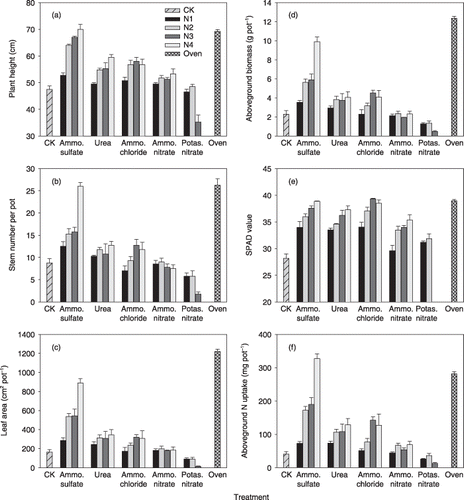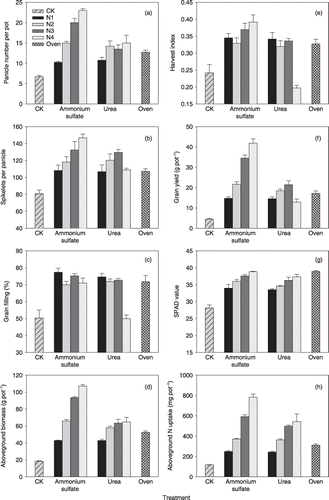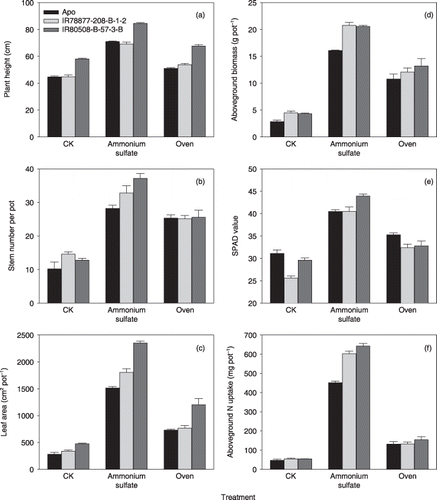Figures & data
Table 1 Nitrogen sources, N rates, soil, varieties and sampling dates in the four pot experiments
Figure 1 (a) Plant height, (b) stem number, (c) leaf area, (d) above-ground biomass, (e) SPAD value and (f) above-ground N uptake of Apo grown aerobically in soil under five N sources (ammonium sulfate, urea, ammonium chloride, ammonium nitrate and potassium nitrate) at four N rates (N1–N4 = 0.3, 0.6, 0.9 and 1.2 g N pot−1, respectively) and in an untreated control (CK) and oven-heated soil treatment in pot experiment 1. The soil was from an aerobic field where aerobic rice has been grown continuously for 11 seasons. Oven heating of the soil was done at 120°C for 12 h. Error bars represent the standard error.

Figure 2 (a) Panicle number per pot, (b) spikelets per panicle, (c) grain filling, (d) above-ground biomass, (e) harvest index, (f) grain yield, (g) SPAD value and (h) above-ground N uptake of Apo grown aerobically in soil with four rates of ammonium sulfate or urea application (N1–N4 = 0.3, 0.6, 0.9 and 1.2 g N pot−1, respectively) and in an untreated control (CK) and oven-heated soil treatment in pot experiment 2. The soil was from an aerobic field where aerobic rice has been grown continuously for 11 seasons. Oven heating of the soil was done at 120°C for 12 h. Error bars represent the standard error.

Table 2 Plant growth of Apo grown aerobically under the application of ammonium sulfate and urea and oven heating of the soil compared with the untreated control in pot experiment 3
Figure 3 (a) Plant height, (b) stem number, (c) leaf area, (d) aboveground biomass, (e) SPAD value and (f) above-ground N uptake of three rice varieties grown aerobically under untreated, ammonium-sulfate fertilized soil and oven-heated soil in pot experiment 4. The soil was from an aerobic field where aerobic rice has been grown continuously for 11 seasons. The three varieties were Apo, IR78877-208-B-1-2 and IR80508-B-57-3-B. The rate of ammonium sulfate application was 1.2 g N pot−1. Oven heating of the soil was done at 120°C for 12 h. Error bars represent the standard error.
